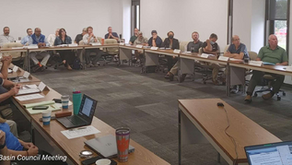The Top 10 Safety Tips for Asset Managers
- JD Solomon
- Jan 3, 2023
- 2 min read
Updated: Jan 4, 2023

Asset managers often go to the field to view their equipment, collect missing asset data, or support condition assessments. We recently went through a multi-page field safety checklist before starting a condition assessment program. I was asked what my Top 10 Safety Tips would be for asset managers if we were without a checklist.
I shared these on the whiteboard in the site’s training room.
#1. Always use the basic PPE (Personal Protective Equipment)
This includes a hard hat, long pants, a reflective vest, eye protection, hand protection, and a communication device.
#2. Start with a safety briefing each day
Cover the basic safety protocols for the site, plus where repairs or construction may be occurring.
#3. Map the known hazards
Use some form of floor plan or geospatial map and mark known hazards where things like lockout tagout and confined space are required, plus where repairs or construction may be occurring.
#4. Designate a check-in place and person
Normally the check-in place is near the facility exit and the check-in person is someone with supervisory authority over the operations.
#5. Avoid climbing ladders or depending on handrails
Yes, you will need to use them but minimize dependency on them since you are unfamiliar with their condition.
#6. Avoid walking on metal grates
Yes, you will need them but hopefully you can keep your feet on concrete most of the time.
#7. Avoid touching or grabbing process piping
You never know how hot or cold they may be, and while you should be wearing hand protection, don’t rely on it.
#8. Organize your note-taking
Note-taking is the primary reason you are there, so don't create a safety hazard by spreading out and cluttering the workspace.
#9. Stay back
It is not your facility so let someone else get close to the electrically charged equipment, rotating assets, and rolling stock. Observe at a safe distance.
#10. Use a site escort
Insist on a site escort being with you at all times. It is good for safety and gaining asset insights. Plus, that is the way you would want it if you were the plant manager.
Not About Experience or Capability
Many asset managers have plant operations or maintenance experience. Some asset managers have training and experience leading data collection teams or performing condition assessments. That is not the point.
Asset managers need to remember that they are usually on-site as visitors sent to observe or fill data gaps. The role is temporal and limited. Act according to how the full-time plant site views any visitor.
Safety is Job One
The ultimate goal is to return home from work each day alive and uninjured. That goes for everyone around you too. It takes structure and discipline to manage a successful asset management program. It starts with safety.
JD Solomon Inc provides solutions for facilitation, asset management, and program development at the nexus of facilities, infrastructure, and the environment. Contact us for more information about our asset management-related services, including criticality analysis, reliability & risk assessments, and our ASAP Asset Management program evaluation.
Founded by JD Solomon, Communicating with FINESSE is the community of technical professionals dedicated to being highly effective trusted advisors. Learn more about our publications, webinars, and workshops. Join the community for free.




Comments